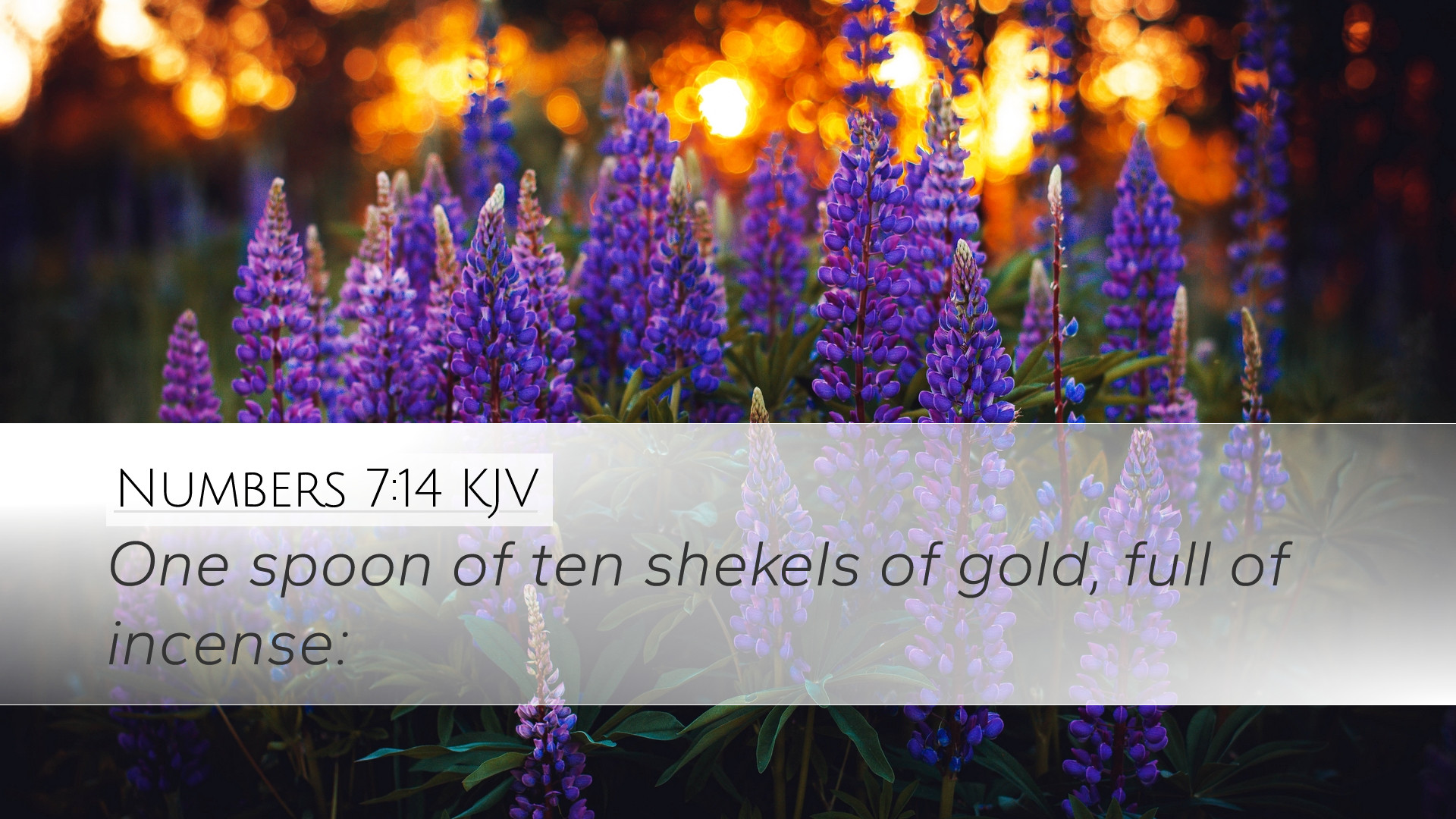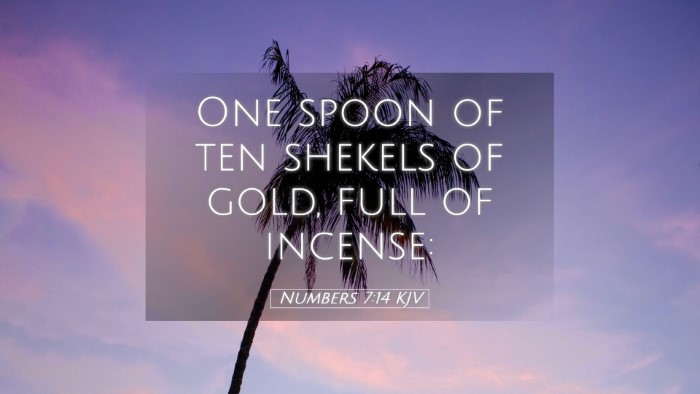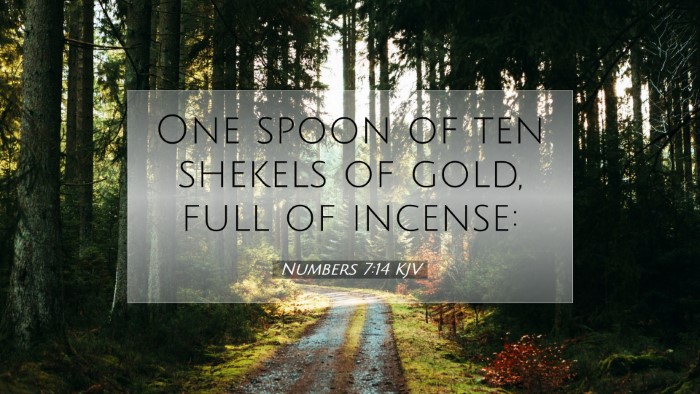Commentary on Numbers 7:14
Verse: Numbers 7:14 - "And his offering was one silver charger, the weight whereof was an hundred and thirty shekels, one silver bowl of seventy shekels, after the shekel of the sanctuary; both of them were full of flour mingled with oil for a meat offering."
Introduction
The Book of Numbers serves as a pivotal text in the Pentateuch, detailing the wilderness experiences of the Israelites following their exodus from Egypt.
Chapter 7 stands as a record of the offerings presented by the tribal leaders during the dedication of the altar.
Numbers 7:14 provides a glimpse into the offerings made and their significance within the broader narrative.
This commentary synthesizes insights from notable public domain commentaries, providing depth for pastors, students, theologians, and Bible scholars alike.
Contextual Background
The context of Numbers 7 reveals the communal and ceremonial aspects of worship within the Israelite society.
Each tribal leader brought offerings to signify their dedication to God and the collective commitment to the communal life.
This act of offering not only reflects individual piety but also illustrates the unity and identity of Israel as chosen people.
As we examine the details of these offerings, we find layers of meaning concerning worship, sacrifice, and stewardship.
Analysis of the Offerings
The Silver Charger
The silver charger weighed "one hundred and thirty shekels."
According to Matthew Henry, the charger represents a significant contribution to the temple worship, as silver is a precious metal symbolizing purity and value.
It indicates that the contributions offered were not merely symbolic but substantive, intending to honor the God who delivers and sustains.
Furthermore, in the ancient Near Eastern context, the practice of offering such valuable items was a demonstration of respect and reverence.
Albert Barnes elaborates on the wealth involved in such gifts, highlighting that they reflect the esteem in which the Israelites held their covenant with God.
This suggests a community willing to invest materially in their relationship with God, emphasizing the biblical principle that giving is an act of worship.
The Silver Bowl
The second offering, a silver bowl of "seventy shekels," complements the first offering.
Adam Clarke comments that the contents of the bowl—a mix of flour and oil for a meat offering—are significant.
Flour and oil, staples in the Israelite diet, symbolize sustenance and provision, reminding the people that their physical needs are met by God.
The act of mixing flour with oil is representative of the richness and fullness of God’s provision, allowing an act of devotion to become a reminder of His faithfulness.
Theological Implications
Significance of Offerings
The offerings made in Numbers 7:14 can be viewed as a precursor to the New Testament understanding of giving.
Matthew Henry points out that the offerings not only fulfill a ritual purpose but also set the stage for the principle that in worship, we offer our best to God.
This principle resonates throughout the Scriptures, culminating in the ultimate offering of Christ Himself as the sacrificial Lamb.
As Albert Barnes explains, the act of giving reveals the heart's disposition.
The genuineness of the worshiper is laid bare in their willingness to sacrifice for the covenant community and its worship, illustrating the ongoing need for dedication among believers today.
Community and Leadership
Leadership within Israel is underscored through this passage.
Each tribal leader taking part in the offering underscores the idea of collective responsibility in maintaining a right relationship with God.
According to Adam Clarke, the gathering of these offerings reflects unity among diverse tribes in the service of a singular divine purpose.
This principle can serve as a meaningful reminder for modern churches, indicating the importance of synergy in communal worship and mission.
Conclusion
Numbers 7:14 provides more than a mere historical account of offerings; it invites contemplation on the nature of worship, the joy of giving, and the responsibilities of leadership within the faith community.
Through a rich tapestry of meanings derived from the public domain commentaries, we recognize that each significant detail contributes to a larger narrative of God's faithfulness, the sanctity of offerings, and the unyielding call for believers to draw near in devotion.


